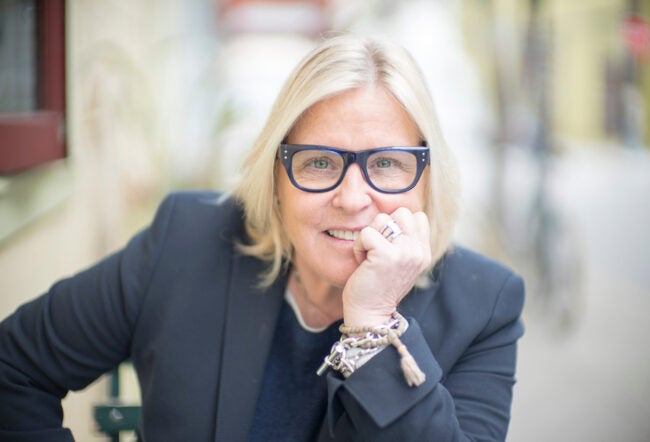The human body is teeming with bacteria and fungi – approximately 100 trillion microorganisms, sometimes called “microbes” — that can help digest food, fend off infections and perform countless other life-sustaining tasks. These microorganisms, which can also be harmful to their human hosts, make up what is now known as the “microbiome.” And while they have never been well understood by the scientific community, that is starting to change, thanks to initiatives such as the National Institutes of Health’s Human Microbiome Project, which was launched in 2008 and has so far collected and published genomic data on more than 175 microbes. Ultimately the project seeks to catalog 900 microbial genomes from both healthy volunteers and those suffering from diseases.
Not surprisingly, the biotechnology industry is spotting plenty of opportunities in the microbiome. Several companies have sprouted up in recent years aimed at developing therapies that alter the microbiome for the benefit of human health. Other start-ups are seeking to capitalize on what the microbiome can teach the medical profession: For example, why do some patients respond better to particular drugs than others do? These companies are facing a raft of challenges — not the least of which is an uncertain regulatory path — but entrepreneurs are still flocking to the field of microbiome discovery and product development.
Among these entrepreneurs is Peter DiLaura, CEO of South San Francisco-based Second Genome. “We have 100 trillion bacteria that we are all carrying around with us and that play a critical part in things like our immune system and the way we process energy,” DiLaura says. “In the past, we have been focused on addressing the pathogenic component of bacteria. But in reality, there’s a tremendous benefit of this bacterial community in our body. That’s really an important sea change in how we think about health.”
Second Genome was founded in 2009 on technology developed at Lawrence Berkeley National Laboratory that allows scientists to identify microbes and analyze their DNA. “We now have a capacity we never had before to interrogate and understand this really complex population of bacteria and how this bacteria interact with the host — the human biology,” DiLaura says.
Several companies have sprouted up in recent years to try and develop therapies that alter the microbiome for the benefit of human health.
DiLaura’s company is studying the substances that bacteria secrete, such as proteins and metabolites, with the goal of developing drugs to manipulate the microbiome and therefore change the course of particular diseases. “In disease situations, there’s something wrong with how the microbiome and the host are interacting,” DiLaura says. “We believe the biological reactions between the microbiome and the host can either be inhibited or activated in order to improve certain disease states.”
Second Genome is still in the pre-clinical stage – which means that the company has not yet identified drug candidates that it wants to test in people — but it has identified a few research priorities, including inflammatory bowel disease and Type 2 diabetes, DiLaura says.
Venture capitalists appear enthusiastic about the Microbiome opportunity: Second Genome has raised $11.5 million from Advanced Technology Ventures, Morgenthaler, Wavepoint Ventures and individuals, including co-founder and biotech serial entrepreneur Corey Goodman. Other well-funded startups in this space include Vedanta Biosciences, Seres Health, Microbiome Therapeutics and ViThera Pharmaceuticals.
Stephen Sammut, a senior fellow in the health care management department at Wharton and a lecturer in the Wharton entrepreneurship program, likens today’s excitement over the microbiome to the genomics boom of the early 2000s.
“You can begin some analogies as to how this may play out in terms of business opportunity,” says Sammut, who is who is also a partner at Burrill & Co., a San Francisco-based life sciences venture capital firm. “When the human genome was published, there was a whole rush of companies getting into genomics and proteomics. There was this great anticipation that the mapping and ultimately sequencing of the human genome was going to open vast new vistas to facilitate pharmaceutical discoveries and point to literally hundreds, if not thousands, of potential drug targets.”
At one point, at least 60 genomics companies were trading on Wall Street, Sammut notes. Many of them didn’t survive. “Some got into the business of developing pharmaceuticals, but in many cases, they were doing so with pharmaceuticals that were not really based on the fundamental science” of genomics discovery that they had been working on before.
New Challenges for Regulators
One of the leading researchers in this new field is Gary Wu, a gastroenterology professor at the University of Pennsylvania’s Perelman School of Medicine, who says the early evidence is pointing to a range of possible roles for the microbiome in treating disease. “The whole notion is that if you could make the microbiome look healthier, in fact it could be used to treat disease or prevent the development of disease.”
Manipulating the microbiome may prove useful beyond digestive and metabolic diseases, Wu adds. “Allergic diseases, for example, have a genetic component — our genome predisposes us — but also there’s an environmental effect. Microbes are all over the place. There’s evidence that microbes in the gut may play a role in autism spectrum disorders through the production of exotic small molecules. There’s evidence that the microbiota can transform certain dietary constituents into a gas that may accelerate coronary vascular disease. Then there’s the skin microbiome, which has a role in the development of psoriasis and in wound healing.”
Wu chairs the scientific advisory board of the American Gastroenterology Association’s Center for Gut Microbiome Research and Education, which acts as a clearinghouse for information and guidance on research in the field. One of the group’s priorities is to help shape the regulatory pathway for microbiome therapeutics — a pathway that is still largely undefined, Wu says.
We believe the biological reactions between the microbiome and the host can either be inhibited or activated in order to improve certain disease states.” –Peter DiLaura
Part of what complicates the regulatory picture is that there are already nutritional products on the market that target the microbiome, and they are largely unregulated, at least from a medical standpoint, Wu says. They include “prebiotics,” which are dietary fibers that purport to promote the growth of healthy bacteria in the digestive tract, and “probiotics” — live bacteria found in yogurt and other dairy-based foods as well as in pills sold over the counter. Probiotics are pitched as digestive aids, perhaps most famously by Dannon and its brand Activia.
“These probiotics, in general, tend to be single or maybe two or three organisms. We don’t really have any evidence they actually set up shop in your intestinal tract after you swallow them, because they’re not resilient,” Wu says. “The opportunity is to use genomics to target disease based on the biology of these organisms. In the future, I think there’s going to be a lot of interest in developing designer populations of microbes.”
At that point, the Food & Drug Administration and other regulatory bodies will have to step in, because such products would be marketed as drugs to treat diseases. “A complex microbioal community is a live community that can change over time. We all believe that for the safety of people who receive these types of treatments, there should be certain standards,” Wu notes. “It’s a challenge, because this is a very new area for regulatory agencies.”
For example, these agencies will need to define whether a consortium of microbes constitutes a “biologic” (large-molecule) drug or a chemically based drug, or some combination of the two, because that definition will determine its regulatory path. “And how do you define it if it’s going to change over time?” Wu asks. “There are many questions that I think the FDA and other regulatory agencies still haven’t answered for themselves. So any company that’s working in this space has to work collectively with the FDA to define the pathway forward.”
Lessons from the Genomics Craze
Stephen Tang, CEO of the University City Science Center in Philadelphia — which incubates local start-ups — says he has seen plenty of strategies that have helped companies with brand new technologies succeed. One of his favorite examples is Avid Radiopharmaceuticals, which was founded on first-in-class imaging technology developed at Penn for detecting the beta-amyloid plaques in the brain that are a leading indicator of Alzheimer’s disease. Avid got its start at the Science Center and was acquired in 2010 by Eli Lilly for $300 million up front, plus conditional milestone payments of $500 million.
At one point, at least 60 genomics companies were trading on Wall Street, Sammut notes. Many of them didn’t survive.
Allying with a large and experienced company early in the development process is one way to smooth both regulatory and market acceptance, Tang says. “You want quick uptake from customers, but you need to also understand the scrutiny from regulators. Prior to Avid’s innovation, the only way to diagnose Alzheimer’s was with an autopsy. So Avid had to go through a regulatory pathway to prove both safety and effectiveness as a diagnostic.” Lilly not only has experience navigating the FDA process, it also has an extensive research operation in neuroscience — giving it expertise that could greatly benefit Avid. “Aligning interests is always worthwhile,” Tang notes. The FDA approved Avid’s device, called Amyvid, in April 2012.
In June 2013, says DiLaura, Second Genome formed a research collaboration with Janssen Biotech, a unit of pharma giant Johnson & Johnson. The deal is centered around advancing drug targets to treat ulcerative colitis. J&J’s interest won’t just help Second Genome advance its science, DiLaura notes; it also marks an important stamp of approval to the entire microbiome field. “In any emerging area of science, it’s exciting when the pharmaceutical industry recognizes its importance to their work in a particular disease area. As an early-stage biotech company, we have to collaborate on innovation.”
Looking ahead, and back, what can microbiome entrepreneurs learn from the genomics craze? Sammut believes the pioneers in this field should think beyond just drug development. One promising area, for example, involves drug delivery and metabolism. “This could add a whole new dimension to personalized medicine,” he says. “In general, only one-third of people who take a specific medicine are responders. One would wonder if the two-thirds who aren’t responders share [a microbiome profile] that interferes with the way the drug is supposed to be absorbed. This raises absolutely wonderful questions” that could lead to new diagnostic products for predicting drug response.
Still, Sammut cautions, entrepreneurs and investors will need to be mindful of how challenging it has been to profit from biotech innovations. “What people were disregarding [in genomics] was that the discovery of a drug target was chopped up among a dozen different companies, all of which were expecting they would take significant portions of the value in the form of royalties,” he notes. “In reality, they may have only contributed 2%-3% to the value of a new pharmaceutical, which was divided up among eight to 12 different participants in the process. So there was simply not enough value generation to support the efforts of those companies.”
That history prompts an important question about today’s landscape, Sammut adds: “Will the role that microbiomics plays in drug discovery also be divided over numerous participants, and will there be enough room in the value chain for any one company to be adequately rewarded? I think the jury is going to be out on that for a bit.”


